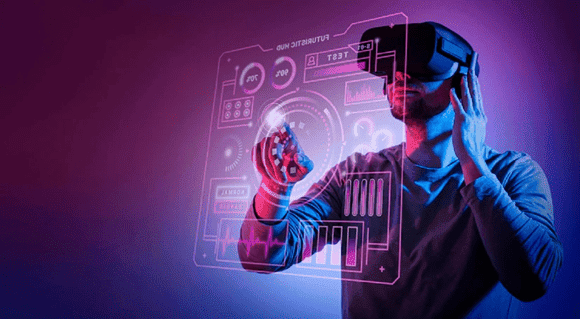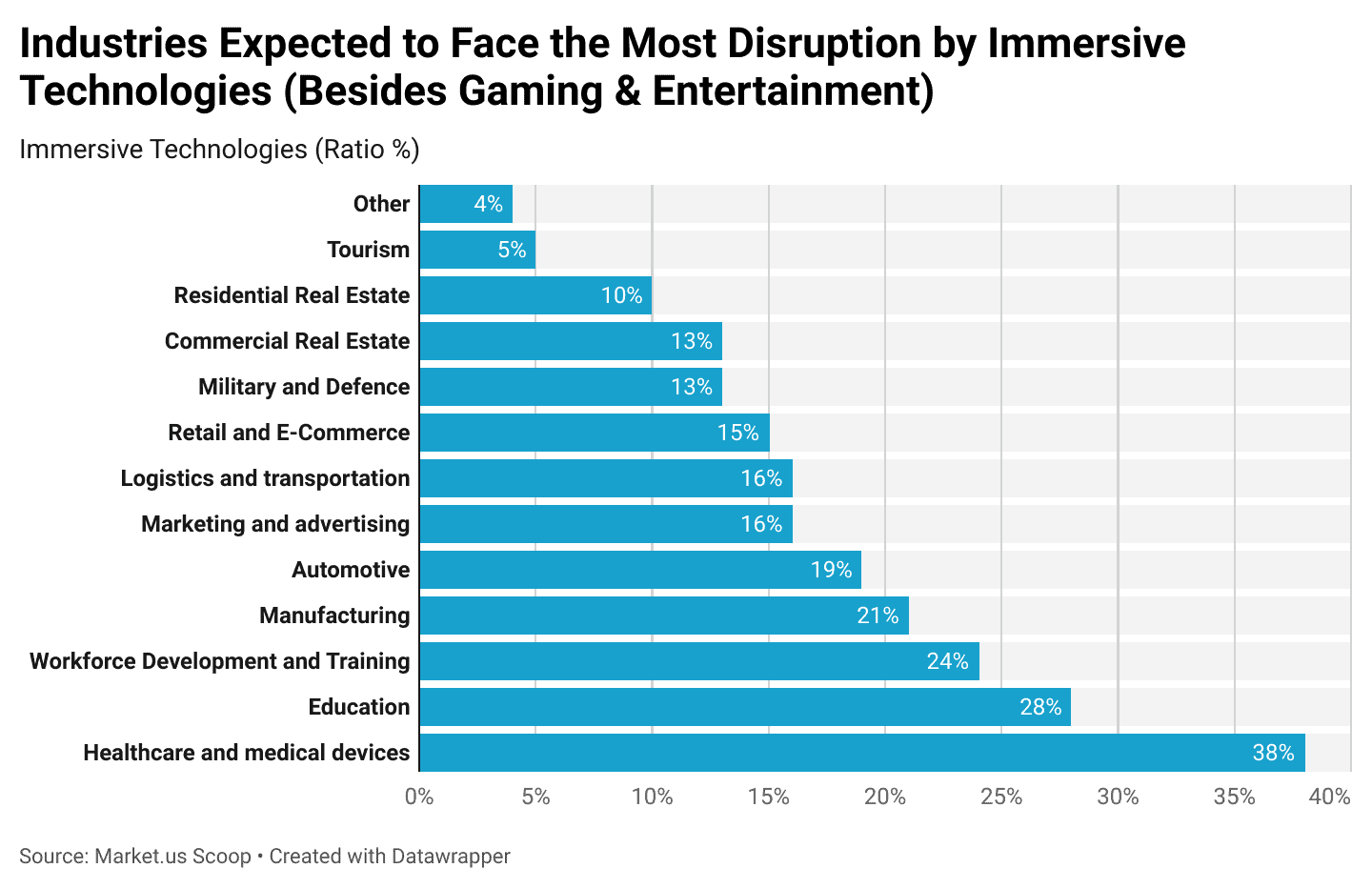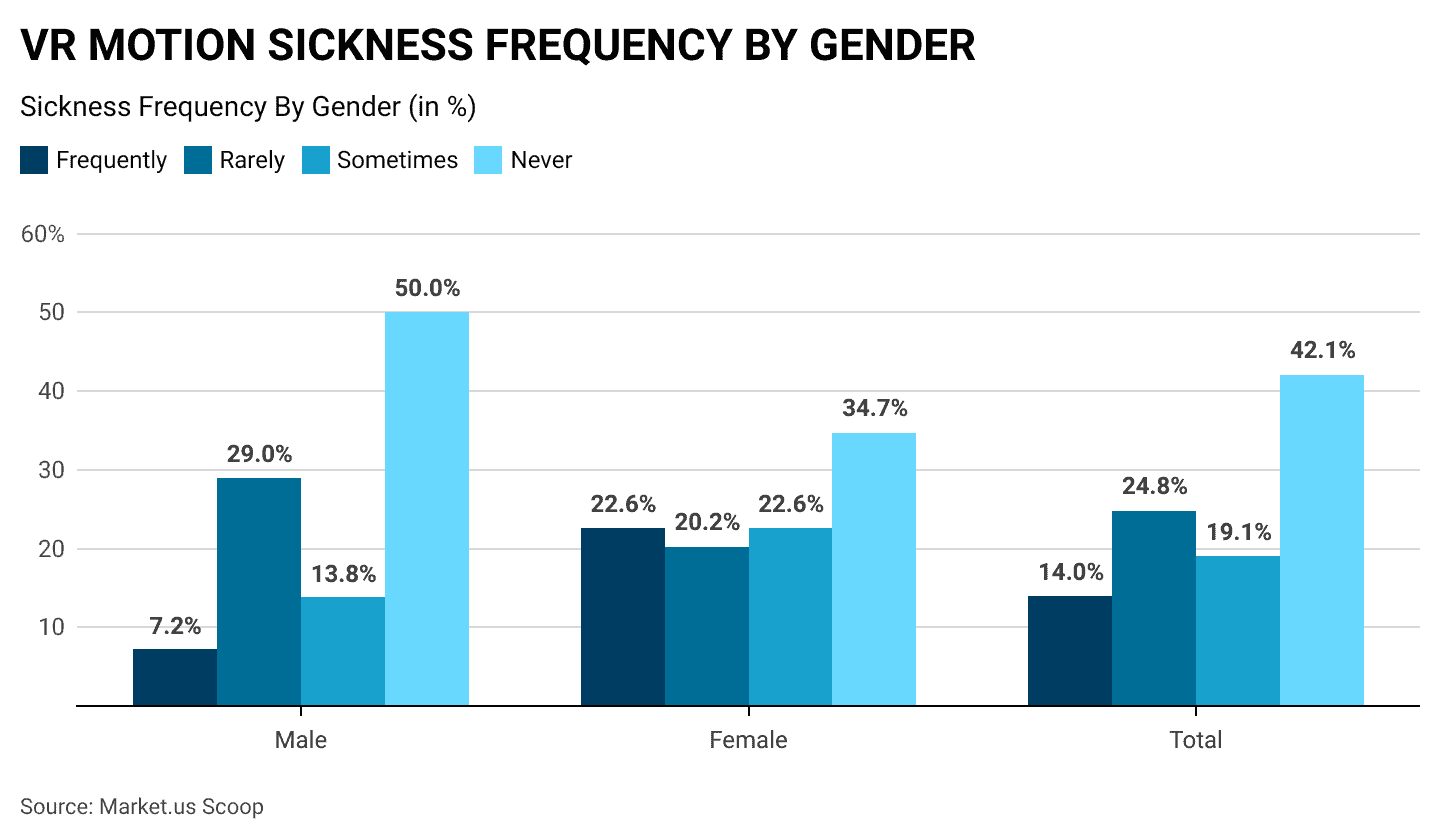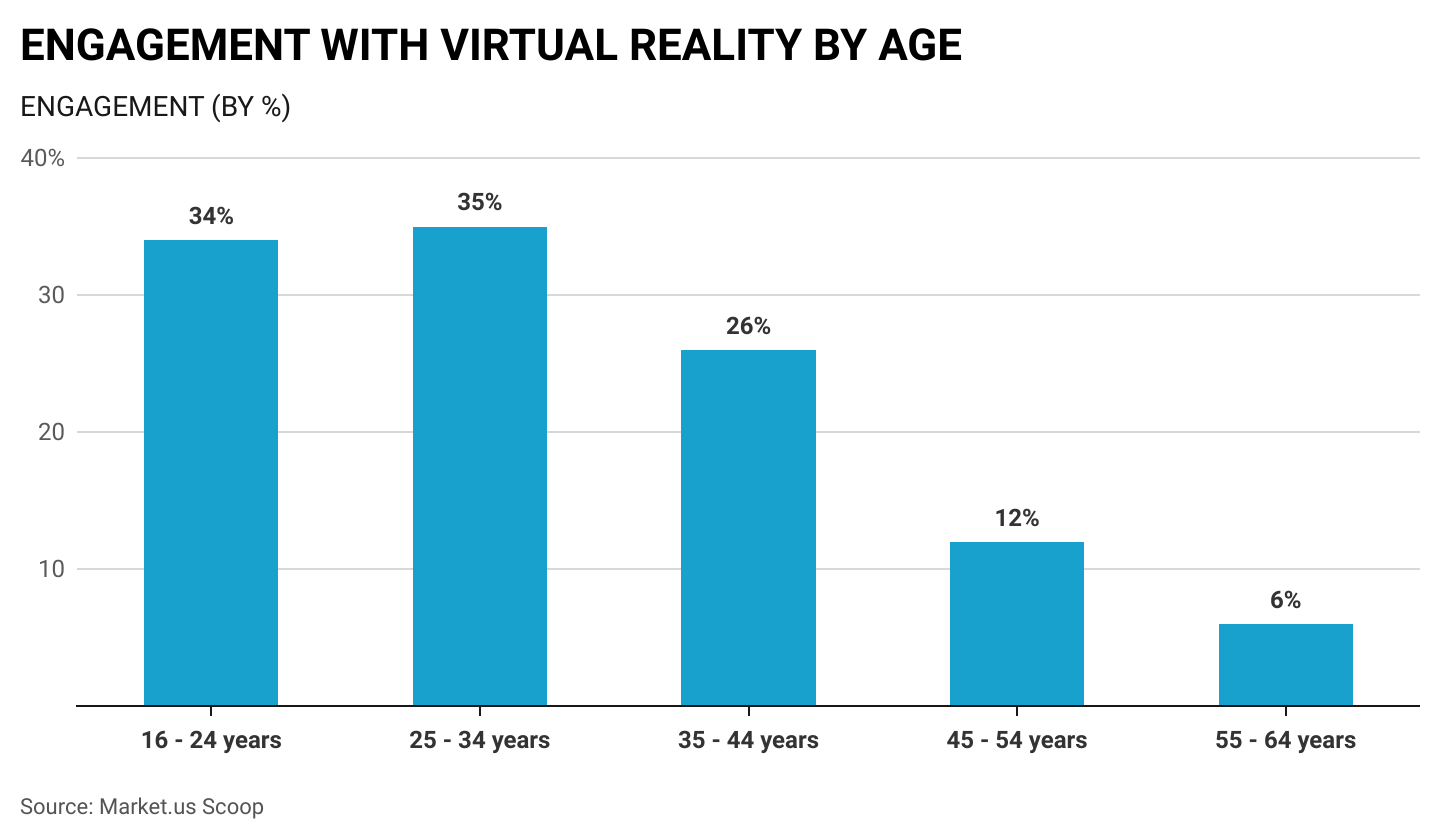Table of Contents
According to Market.us, the Virtual Reality Market size is projected to surpass around USD 26.38 Billion by 2032, and it is poised to reach a registered CAGR of 26.8% from 2023 to 2032.
Virtual Reality Statistics
- Poor user experience is the main barrier to VR adoption, according to 26% of businesses.
- Currently, 171 million people around the world use VR in some capacity.
- By 2020, the VR market is expected to be worth $6.1 billion.
- It is expected that approximately 5.5 million AR and VR devices will be shipped in 2020.
- China is the largest investor in virtual reality, with a $5.8 billion investment.
- The virtual reality gaming market is expected to be worth $92.31 billion by 2027.
- By 2030, VR and AR could affect up to 23 million jobs.
- By 2030, virtual and augmented reality could boost the global economy by $1.9 trillion.

General Statistics on Virtual Reality
VR has a user satisfaction rate of 55%.
Consumer satisfaction appears to be a major factor in VR’s popularity. A recent survey found that more than half of respondents were moderately or extremely satisfied with VR. Those who have never used VR, on the other hand, have little motivation to do so, with 59% stating that they are simply not interested.
The number of VR startups has increased by 14% in less than a year.
COVID-19 is responsible for a large portion of the rise in 2020. Because the pandemic has forced people to communicate, study, and work from home, businesses have used virtual reality to replace in-person interactions where possible, according to virtual reality business statistics.
Approximately 75% of Forbes’ “World’s Most Significant Brands” employ AR or VR.
At this early stage, giants such as Facebook, Amazon, Google, Apple, Intel, Sony, and Microsoft are all attempting to dominate the VR market. Over 400 people work on VR at Facebook alone, and 230 other companies are developing VR software and hardware as well. The primary goal of using VR is to provide customers with a 360-degree interactive experience.
Aside from gaming and entertainment, healthcare is the sector most likely to be disrupted by VR/AR (38%).
Healthcare and education are the two industries most likely to be disrupted by AR/VR, according to virtual reality statistics (28%). Workforce development (24%) is followed by manufacturing (21%), automotive (19%), marketing and logistics (16%), retail (15%), and, military (13%).

More than half of VR users have experienced motion sickness.
Motion sickness is a significant impediment to VR progress and adoption. With approximately 57.8% of the population claiming to have experienced it at least once, it’s an important factor to consider. Only 13.7% of the population suffers from it regularly, while 19.1% suffer from it only occasionally. Finally, 24.9% go through it only occasionally. On the other hand, 42.2% of people state to have never had it.
Women are more prone to VR sickness than men.
In comparison to 7.2% of men, 22.6% of women experience VR sickness regularly. According to VR motion sickness statistics, 22.6% of women encounter it on a regular occasion, compared to 13.8% of men. It happens only rarely for 29% of men and 20.2% of women. Finally, 50% of men have not experienced VR sickness, compared to 34.7% of women.

According to virtual reality statistics, the number of AR users on social media will reach USD 43.7 million by 2020. This accounts for 20.8% of all users. Snapchat, which makes extensive use of machine learning models and local lenses, is at the forefront of the AR revolution. Facebook has also launched augmented reality advertising. With its try-on feature, Instagram is following suit.
The main barrier to VR adoption, according to 27% of organizations polled, is a lack of content offerings.
What is slowing down VR adoption, according to 19% of organizations, is also user experience, which is tied for second place with business and consumer reluctance (both 19%). Regulation and legal threats rank second (12%), followed by consumer costs (11%). Lastly, 9% of organizations are hampered by financing and investment.
Virtual reality training statistics reveal that VR training reduces workplace injury risk by 43%.
Virtual reality training can be used to reduce the dangers of high-risk workplace hazards. Not only that. VR training can help improve employee competencies. As a reference, 39% of larger companies train their employees using VR in a simulation environment. This translates to higher employee retention rates. The retention rate for those who are trained with VR is 75%, compared to only 10% of those receiving traditional training.
Virtual Reality Usage Statistics
Almost one in every five American adults has used or is currently using VR.
According to a recent report, 19% of adult consumers in the United States have used virtual reality at some point. This represents a 16% increase from 2019. It is far more important to note that these customers use it frequently. 31% said they used it at least once a month.
Almost one out of every five American adults has used or is currently using virtual reality (VR).
According to a recent survey, 19% of adult US consumers have used virtual reality at some point. This is a 16% increase over 2019. It is far more important to note that these customers make frequent use of it. 31% reported using it at least once a month.
Those between the ages of 16 and 34 are more likely to use virtual reality.
When we look at VR demographics, we see that 34% of those between the ages of 16 and 24 were or are users. VR users account for 35% of those aged 25 to 34. Next, 26% of people between the ages of 35 and 44 have used VR. Only 12% of those aged 45 to 54 have investigated this technology. Finally, only 6% of those over the age of 55 have had any contact with it.

VR Market Statistics
Those aged 16 to 34 are the most likely to use virtual reality.
Looking at VR demographics, we see that 34% of those aged 16 to 24 were or our users. VR users make up 35% of those aged 25 to 34. Following that, 26% of people aged 35 to 44 have used VR. Only 12% of people aged 45 to 54 have looked into this technology. Finally, only 6% of people over 55 have had any contact with it.
Around 5.5 million AR and VR devices were expected to be shipped globally in 2020.
Customers have purchased 26 million AR/VR devices. According to virtual reality growth statistics, the number of ships expected in 2020 was expected to double to 11 million in 2021. Following that, it is expected to reach 43.5 million by 2025, an increase of eightfold from 2020.
Sony accounts for 43% of total VR device shipments.
Aside from the software market, which is becoming a billion-dollar industry, the market share of VR headsets is increasing year after year. Other major players include Facebook’s Oculus, which has a 19.4% market share, and HTC, which has a 12.9% market share.
Virtual Reality Growth in Different Industries
In Germany, 50% of those polled said they would choose a vacation spot using VR if it was free.
According to a study conducted in Germany, the general public is eager to use virtual reality in tourism. In addition to those who would use VR if it were free, 13% would pay for it. According to Tourism Australia’s VR tourism statistics, 20% of consumers use VR when selecting a vacation destination. Furthermore, 25% intend to use VR in the future to make better decisions about where to go.
Almost 46% of automotive and manufacturing companies believe that VR/AR will become mainstream within the next three years.
According to the most recent survey of over 700 executives from the manufacturing, automotive, and utility sectors, virtual reality will play a significant role in their future. 50% of those who do not currently use AR or VR in their businesses intend to do so within the next three to five years. For 46% of executives, technology will be mainstream within their organization within three years. However, for 38% of the population, it could take three to five years.
97% of students expressed an interest in VR courses.
Only 23% of schools have tested VR, despite the high level of interest from students. Just 10% of schools plan to use VR in the future. According to VR Learning statistics, 68% want to use the tech to enhance their courses and create better educational material. In addition, 72% want to reproduce real experiences in the course using VR simulations.
Education VR investment could become the fourth largest segment.
One of modern education’s flaws is its inability to correctly explain complex concepts and make them easier for students to understand. Statistics show that virtual reality can help to solve many of these issues. VR in education is expected to generate $200 million by 2020, rising to $700 million by 2025.
Virtual Reality Trends
By 2030, the VR and AR industries could employ up to 23,000,000 people.
At the moment, the growth of AR/VR affects less than 1 million jobs. These two technologies are expected to increase productivity and innovation. This means that the number of jobs affected will grow significantly, particularly in China and the United States.
Virtual and augmented realities have the potential to boost the global economy by $1 trillion by 2030.
PwC UK assessed the potential impact of augmented reality and virtual reality on global economies. They discovered that the various applications of virtual and augmented reality will have a significant impact on global GDP.
Discuss your needs with our analyst
Please share your requirements with more details so our analyst can check if they can solve your problem(s)



